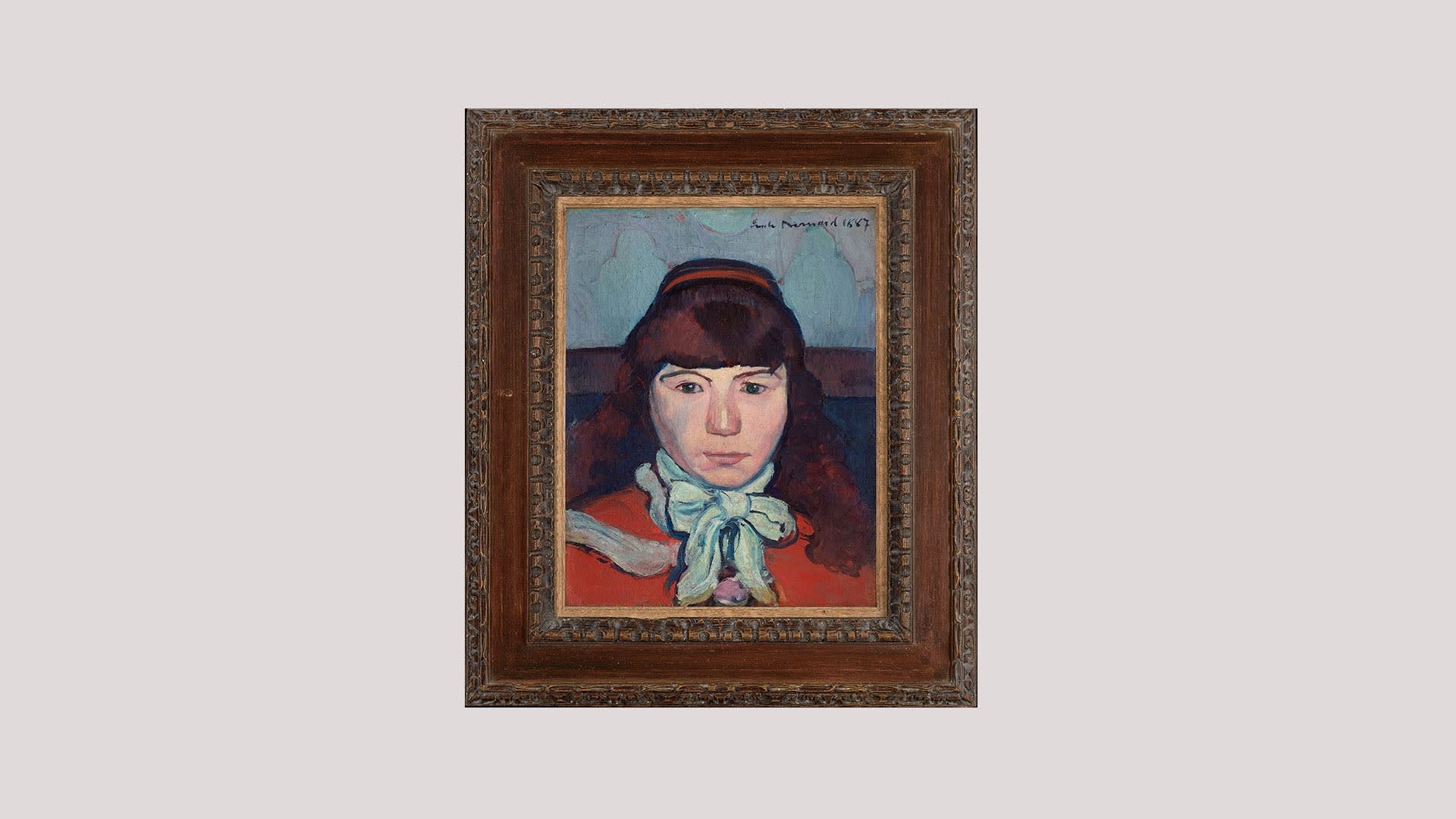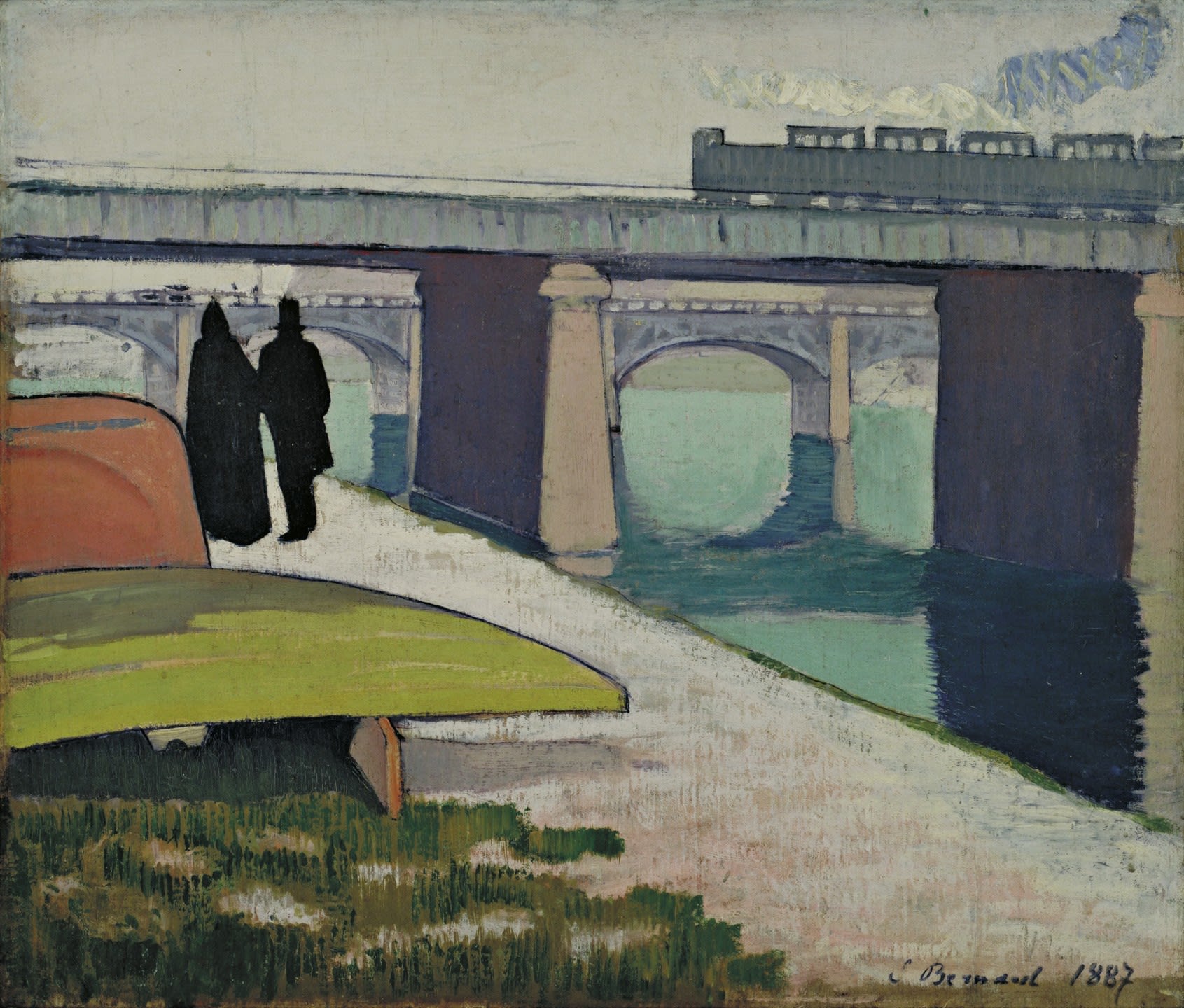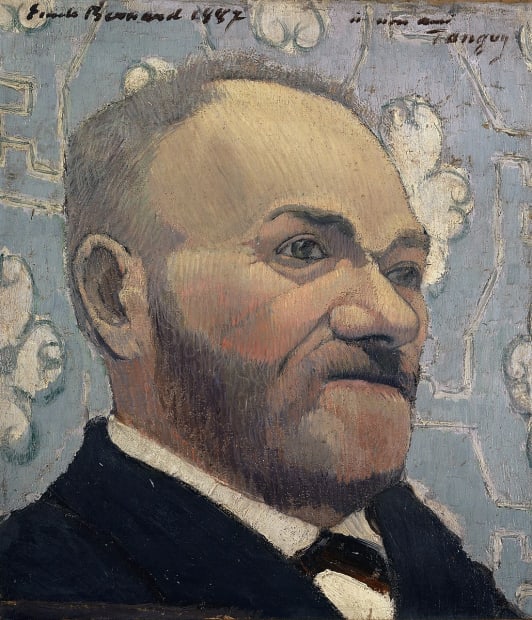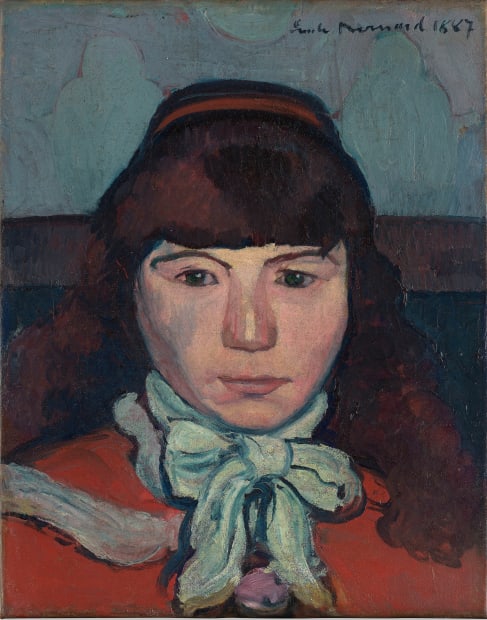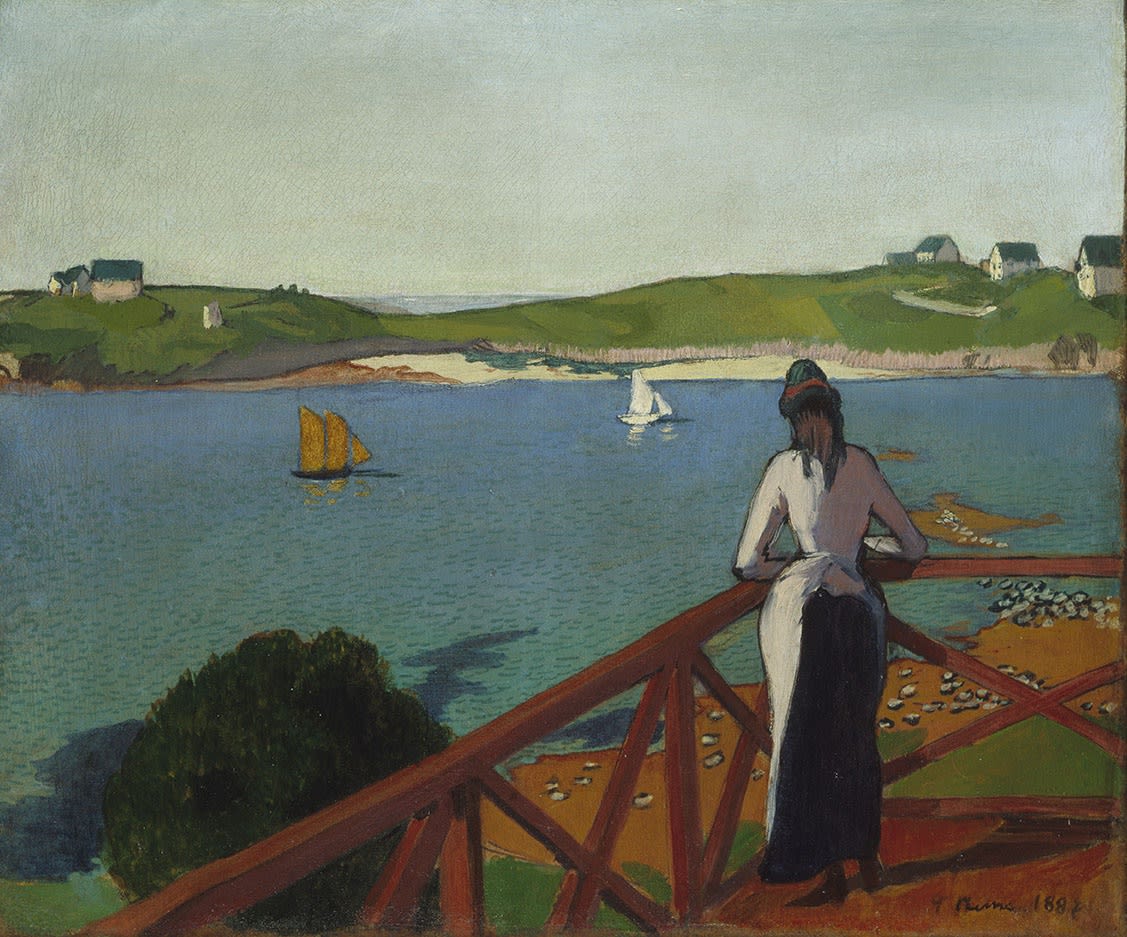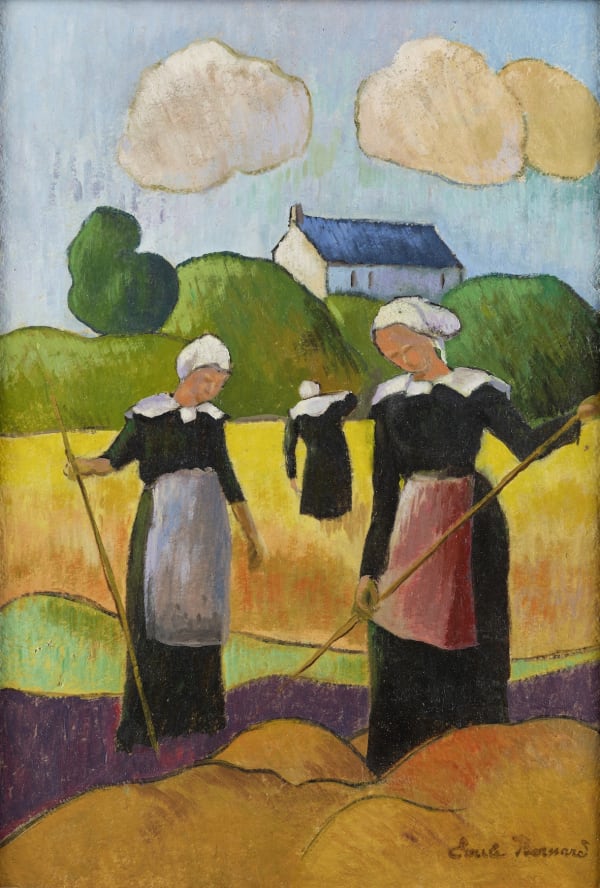-
One Work : One Story
-
-
EMILE BERNARD (1868-1941) IS A FRENCH ARTIST WIDELY REGARDED WITH THE DEVELOPMENT OF THE SYNTHETIC AND CLOISONNISM MOVEMENT AND THE EVOLUTION OF ART IN THE LATE 19TH AND EARLY 20TH CENTURY.
THE ARTIST REMAINS A PIVOTAL FIGURE IN THE DEVELOPMENT OF NEW MODERN THEORIES, AND HIS PRACTICE AND WRITING LEAD TO NEW INNOVATIONS IN painting COMPOSITIONS.
A PAINTING OF THE ARTIST'S LOVER PORTRAIT DE MARIE LEMASSON (1887) IS A REMARKABLE EXAMPLE OF THE ARTIST'S EARLY PORTRAITS, A COMMANDING AND PERFECTLY COMPOSED PICTURE THAT DEMONSTRATES THE ARTIST'S – A THEN EIGHTEEN-YEAR-OLD TEENAGER – DISTINCTIVE TALENT FOR PORTRAIT COMPOSITIONS.
This work was given to Jacques Tousset, a longtime friend of the artist and has not been shown until it was recently rediscovered.
We wish to thank Mr André Cariou, art historian and former director of the quimper fine arts museum, for his unique contribution in the realisaton of this viewing room.
-
 Emile BernardPortrait de Marie Lemasson, 1887Oil on canvas
Emile BernardPortrait de Marie Lemasson, 1887Oil on canvas
41.2 x 32.1 cm
16 ¼ x 12 5/8 inches
Signed upper right Emile Bernard 1887 -
Romance in Brittany
On April 4 1886, Emile Bernard, then a 17-year-old boy, decided to undertake a tour of Brittany on foot.
Different from his teacher, Fernand Cormon, Bernard was inspired by the impressionist movement to work on the motif of line.
His journey lead him to Saint-Briac, in the Cotes-d'Armor on the Emeraude Coast, near Dinard and Saint-Malo.
He settled in a hostel run by a Madame Lemasson. What initially was only a brief stage of his trip ended up lasting over five weeks. This was due to the hostel’s welcoming atmosphere and the beautiful surrounding landscapes. Most importantly, however, because of the hostess’ fourteen year old daughter, Marie, whom the young painter fell in love with.
-
Against all expectations, and despite his parents' disapproval, Bernard decided to return to Brittany the following year, to Saint-Briac, in hope that he would see Marie again.
-
BERNARD WROTE IN L’AVENTURE DE MA VIE (THE ADVENTURE OF MY LIFE; MANUSCRIPT, 1938, PARIS; NATIONAL INSTITUTE OF ART HISTORY): “I FELL IN LOVE WITH HER DAUGHTER (DAUGHTER OF MS LEMASSON) AND WHEN I SAW HER AGAIN MY LOVE GREW PASSIONATELY. SHE BECAME MORE BEAUTIFUL; HER EYES WERE MESMERIZING. HE THEN WROTE TO HIS PARENTS (EARLY JUNE 1887, BRUSSELS, VAN BOGAERTS FUNDS, ROYAL LIBRARY, FS XXXVI 16): […] I WILL START MARIE LEMASSON’S PORTRAIT.
-

Vincent Van Gogh and Emile Bernard in Asnières-sur-Seine, 1886
-
'See the style and not the object. Identify the abstract meaning and not the objective' Emile Bernard ( Mémoires pour l'histoire du symbolisme pictural de 1890, 1919) -

Emile Bernard, Le Pont d’Asnières, 1887, oil on canvas, © Museum of Modern Art, New York
-

Emile Bernard, le Portrait du Père Tanguy, 1887, © Kunstmuseum, Basel
-
"This portrait of Marie Lemasson is one of the first work corresponding to the new artistic direction of Emile Bernard, marked by the influence of Anquetin and Cezanne, and which will pave the way a year later to the development of Synthetism, in Pont-Aven with Paul Gauguin. The innovation and confidence are remarkable" André Cariou, 2021
-

-

Emile Bernard, Après-Midi à Saint-Briac, 1887, Oil on canvas, © Aarau, Aargauer Kunsthaus.
The women depicted from the back wears the same ribbon as in the Portrait of Marie Lemasson, while contemplating a landscape in Saint-Briac, in the picture Après-Midi à Saint-Briac.
This woman could be Marie Lemasson.
